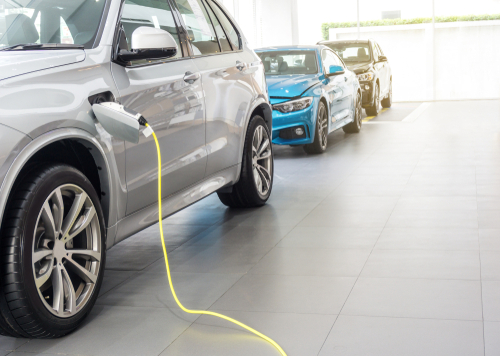Wednesday Wealth Recap
- WallStreetBets traders claim the markets are rigged. And Alexander Green agrees – they are rigged. Just not the way the traders think they are.
- Redditors took advantage of the mechanics of shorting a stock to cause billions of dollars’ worth of damage. Marc Lichtenfeld explains what investors can learn from them.
America has a new, developing energy source. And it’s quietly growing larger every day.
It will become the largest source we have… by far.
It’s not solar… or wind.
I’m talking about the increasing number of electric vehicles in the U.S. Today, there are more than 1.4 million EVs on U.S. highways.
By 2025, that number could reach 6 million. The EV adoption rate will continue to rise as manufacturers offer new EV models to replace fossil-fuel-burning ones.
Individually, EVs have battery packs ranging in size from 40 to 100 kilowatt-hours (kWh).
Like most cars, they spend 95% of their time sitting idle.
In the evening, most owners park their EVs and plug them into a charging port. Despite what is often reported, it doesn’t take eight hours to charge the average EV after a daily commute.
It usually takes just two to three. I know because my wife has been driving a Tesla (Nasdaq: TSLA) Model X for nearly five years.
When she comes home, she plugs the car into its wall charger in our garage. It sits there for at least 12 hours.
That’s a lot of idle time, over and above the amount of charging time. And that idle time could soon be highly profitable for EV owners.
Wasted Potential
Let me explain.
Utilities pay a small fortune for peak power. That’s because they have to run “peaker plants.”
These plants generate power for a few hours each day. Most run on natural gas.
Utilities fire them up to provide power during peak hours. That’s from 10 a.m. to 8 p.m. in the summer and 7 a.m. to 11 a.m. and 5 p.m. to 9 p.m. in the winter. The rest of the time, peaker plants sit idle, not making any money.
So utilities have to charge more for peak power in order to recoup the cost of those plants.
Utilities would rather avoid the expense of building and maintaining peaker plants. And there’s an elegant solution for how they can meet peak power demands.
The power in EV batteries can be used during periods of peak demand. They can act as power sources when idle.
Most EV owners don’t consider their vehicles to be energy sources. But they most certainly are.
For example, our Tesla Model X has a 90-kWh battery.
To put that amount of energy in perspective, the average U.S. household uses about 29.2 kWh per day. That means our car’s battery could provide all the power we use in a three-day period.
Now imagine being able to sell that excess battery power to the utility, especially during peak periods, and being handsomely rewarded for doing so.
Utilities would access the car’s battery only on a schedule determined by its owner. It would all be easily managed via the car’s smartphone app.
Today’s EVs would need only a small amount of additional hardware and software to make the above scenario a reality. And right now, it’s all starting to come together.
Win-Win-Win Scenario
Last September, the Federal Energy Regulatory Commission issued Order 2222. This long-awaited rule opens up America’s wholesale energy markets.
As a result, distributed energy resources (DERs), like behind-the-meter batteries, rooftop solar and EVs, can all sell energy into the wholesale energy market.
Over the next four years, DERs could add more than 380 gigawatts of power to U.S. power grids. Adding DERs as energy sources is a huge step forward in the evolution of our energy supply.
As these energy sources become more widespread, the reliability of our grid will increase and our reliance on large, centralized power plants will decrease.
Utilities will be able to summon power from thousands of sources. This will reduce today’s market inefficiencies, which increase customers’ electric bills.
And back in 2015, the Society of Automotive Engineers issued Standard J3072. This document covers the requirements for connecting an EV and allowing it to supply power to the grid.
Taken together, these rules create a win-win-win scenario. Utilities reduce their needs for peaker plants, EV owners get paid to supply power to the grid and all utility customers see lower bills.
As utilities embrace DERs, we will begin to see EVs come equipped to supply power when sitting idle. It’s just one more reason to own an EV.
Good investing,
Dave
